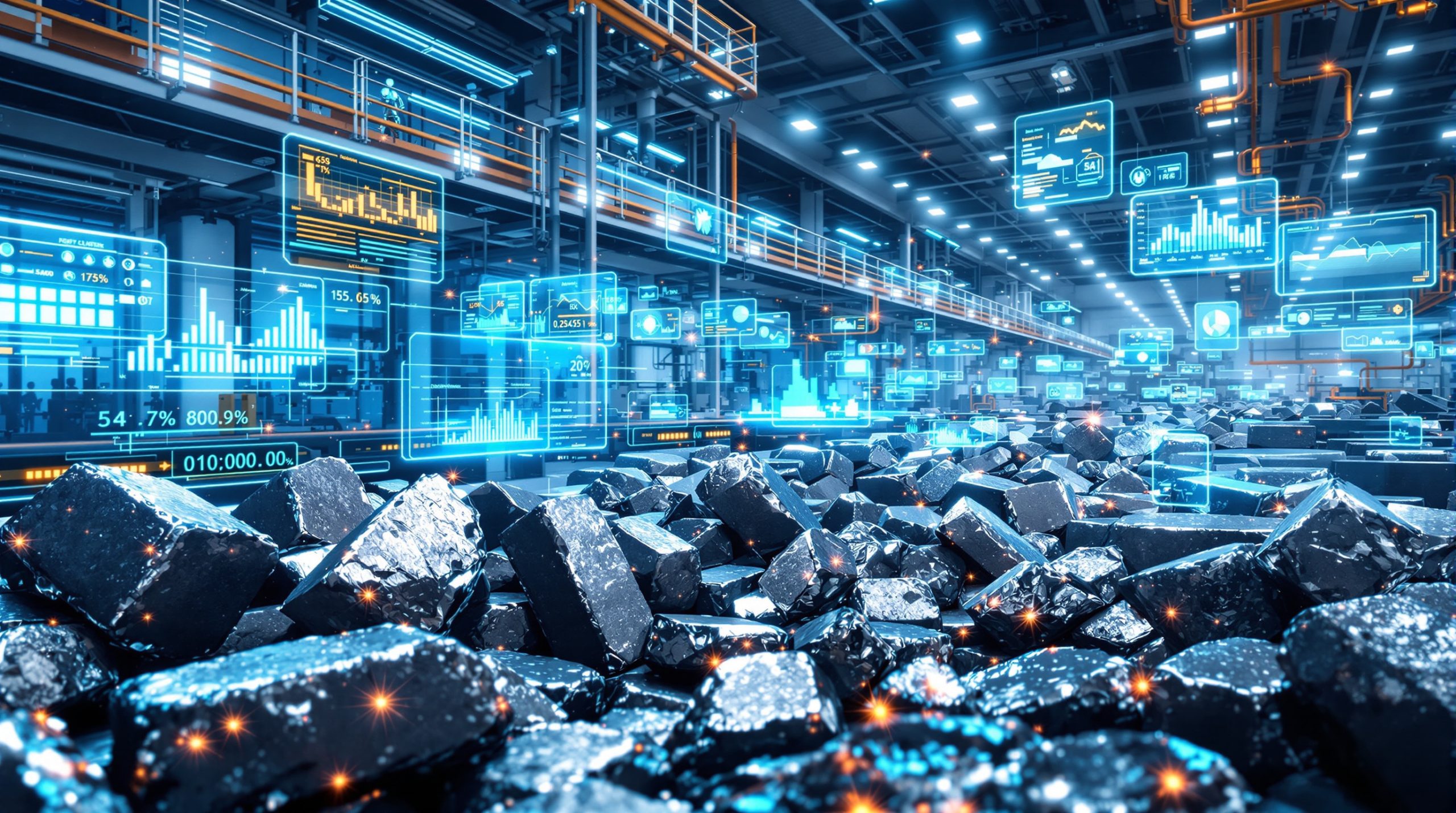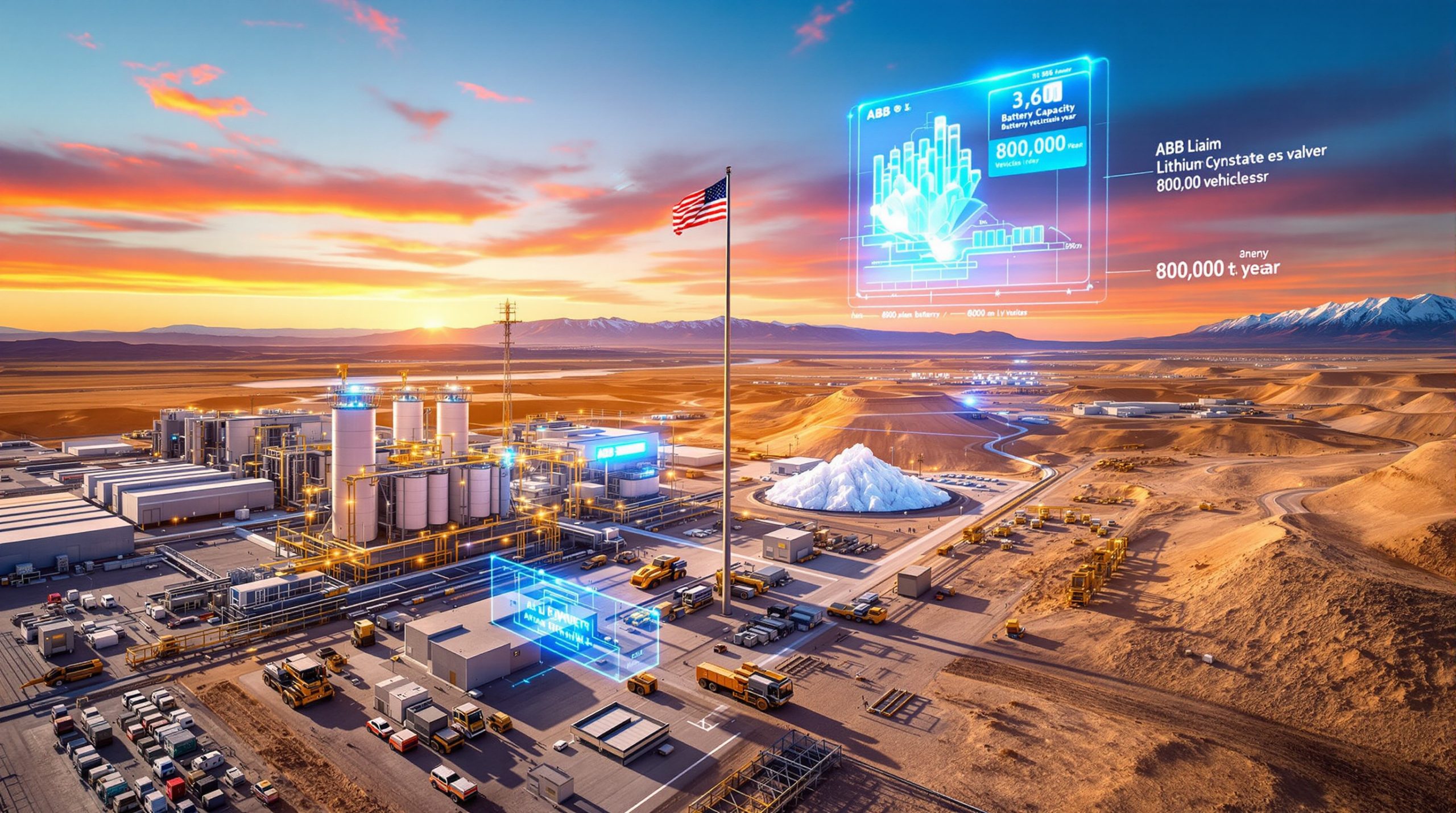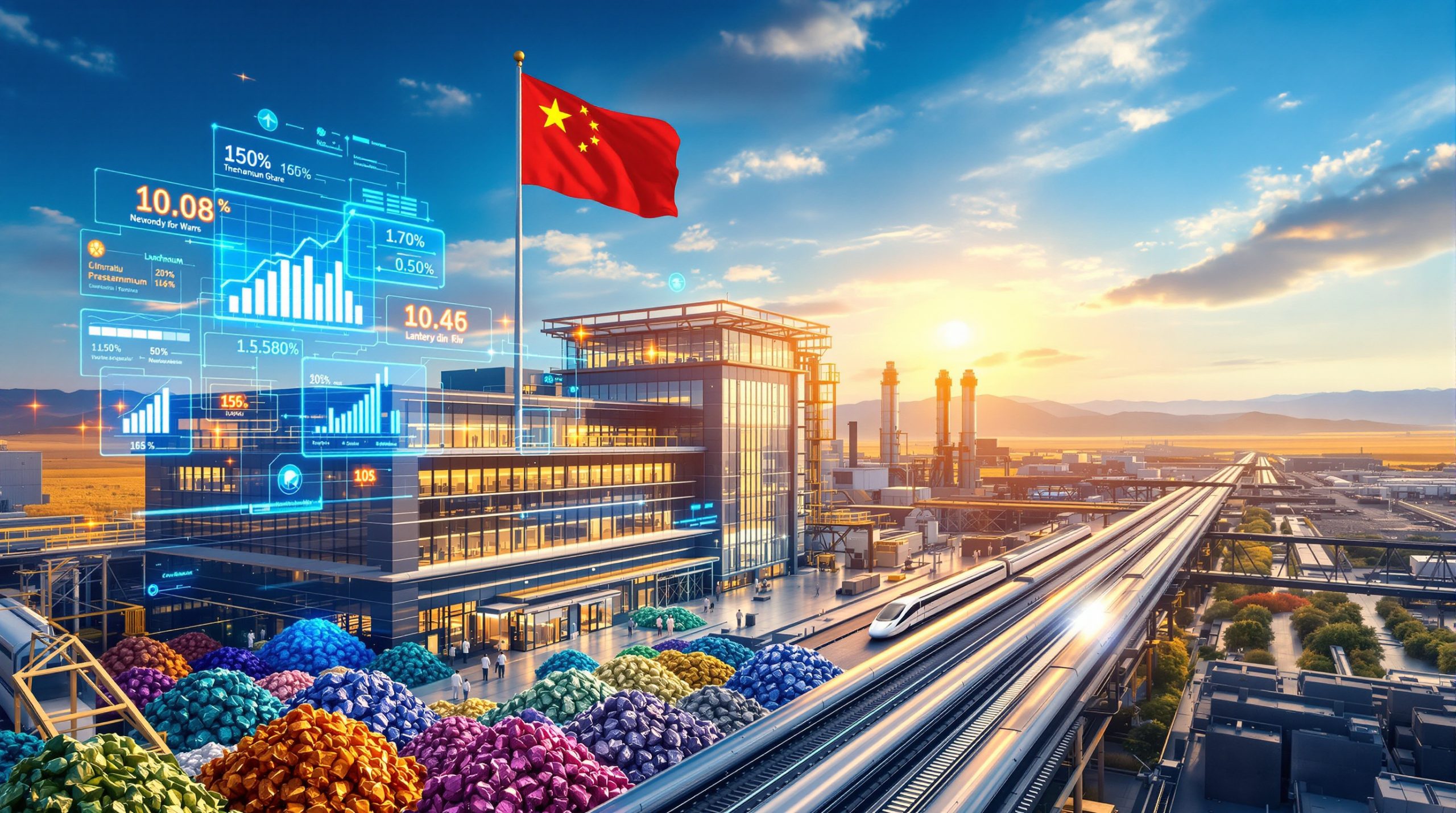How Ionic Rare Earths Is Revolutionizing Magnet Recycling in the USA
Ionic Rare Earths (IonicRE) is establishing itself as a pivotal player in America's rare earth element supply chain through an ambitious network of magnet recycling facilities. The company's strategic initiative directly addresses critical minerals security vulnerabilities in the US rare earth oxide (REO) supply while supporting the national imperative to eliminate Chinese-origin minerals from defense and industrial applications.
With plans for multiple recycling facilities across the United States, IonicRE is leveraging its proprietary technology to achieve REO purity levels exceeding 99.9% – a crucial benchmark for high-performance applications. This domestic production capability aligns perfectly with the Department of Defense's mandated timeline for removing Chinese-origin materials from defense systems by January 2027.
"Our patented magnet recycling technology delivering separated magnet rare earth oxides provides a strategic foil and first-step solution to a much larger primary supply chain solution," explains Tim Harrison, Managing Director of IonicRE, highlighting the company's role in addressing immediate supply gaps while supporting longer-term resource security.
The technology, developed by UK subsidiary Ionic Technologies, offers a sustainable pathway to secure critical minerals that doesn't rely on new mining operations. This approach creates a double benefit: meeting urgent national security requirements while advancing circular economy principles in a traditionally extractive industry.
What is Driving the Need for Domestic Rare Earth Recycling?
The Growing Supply Chain Crisis
The rare earth elements market faces unprecedented pressure following China's export restrictions implemented in April 2025. These restrictions have created immediate shortages of critical materials essential for advanced manufacturing, renewable energy systems, and defense applications. With China controlling approximately 85% of global rare earth processing capacity, these export limitations have sent shockwaves through global supply chains.
Brett Lynch, Executive Chairman of IonicRE, puts the situation in stark terms: "The US is demanding 'independence day' in rare earths supply, without which both its economy and defense industry are critically exposed." This vulnerability has accelerated interest in domestic production alternatives, with recycling emerging as one of the fastest pathways to supply security.
The shortage has particularly impacted high-performance magnet production, affecting everything from electric vehicle manufacturing to wind turbine deployment rates. Industry analysts estimate price increases of 30-45% for certain rare earth oxides since the restrictions began, creating economic pressure across multiple manufacturing sectors.
Defense Sector Mandates
The Department of Defense has established a clear timeline for eliminating Chinese-origin rare earth elements from all defense systems:
- Phase 1 (Current-2026): Prohibition on delivering items containing Chinese-manufactured NdFeB or SmCo magnets
- Phase 2 (From January 1, 2027): Complete ban on Chinese involvement throughout the entire magnet supply chain, including mining, refining, alloying, and manufacturing
This two-phase approach reflects bipartisan policy continuity spanning both the Biden and Trump administrations, with legislative foundations in the National Defense Authorization Acts for FY2023 and FY2024. The consistency of this policy across administrations signals long-term commitment to domestic rare earth production, creating a stable regulatory environment for companies like IonicRE.
Defense contractors face increasing pressure to secure compliant supply chains ahead of these deadlines, creating urgent demand for domestic alternatives to Chinese-origin materials.
What Makes IonicRE's Technology Revolutionary?
Proprietary Recycling Process
IonicRE's technology, developed by its wholly-owned UK subsidiary Ionic Technologies (founded in 2015 as a spinout from Queen's University Belfast), represents a significant advance in rare earth recycling capabilities. The company's approach offers several distinct advantages:
- Non-hazardous methodology: Uses environmentally responsible processes compared to traditional extraction techniques that often employ harsh chemicals and generate toxic waste
- High purity outcomes: Consistently achieves REO purity levels exceeding 99.9%, meeting or exceeding specifications for even the most demanding applications
- Scalable operations: Modular design allows for rapid deployment and expansion to meet growing market demands
- Reduced environmental impact: Significantly lower carbon footprint than primary mining operations, with approximately 80% less carbon emissions
The process effectively treats both end-of-life magnets and manufacturing waste (swarf), maximizing resource recovery from multiple feedstock sources. This flexibility allows the company to target various waste streams, enhancing the economic viability of its operations.
Circular Economy Integration
The company's approach creates a closed-loop system for rare earth elements by:
- Recovering valuable materials from end-of-life magnets and manufacturing waste
- Processing these materials into high-purity oxides ready for new applications
- Reducing dependence on environmentally destructive mining operations
- Providing a sustainable source of critical elements for high-tech manufacturing
This circular model addresses multiple challenges simultaneously: reducing waste, minimizing new extraction requirements, and securing domestic supply chains. The approach aligns perfectly with broader sustainable mining transformation goals while meeting immediate national security needs.
"Our technology creates a true circular economy for critical rare earth elements, turning what was once considered waste into a strategic resource for America's industrial and defense sectors," explains Tim Harrison of IonicRE.
The Belfast demonstration plant has already proven the concept's viability, successfully processing low-grade magnets and manufacturing waste into high-purity rare earth oxides suitable for reintegration into new magnet production.
What Strategic Partnerships is IonicRE Developing?
US Expansion Initiatives
IonicRE is currently engaged in discussions with multiple US-based organizations, including:
- Private sector manufacturing partners seeking secure supply chains
- Government stakeholders supporting critical minerals security
- Defense contractors facing 2027 compliance deadlines
- Technical validation partners evaluating separation technology
Samples from the company's Belfast demonstration plant have already been dispatched to potential US partners to advance technical due diligence and investment discussions. These samples provide tangible proof of the technology's effectiveness, allowing potential partners to verify purity levels and compatibility with their manufacturing processes.
The company is strategically targeting partnerships across the entire value chain, from feedstock suppliers to end-users of recycled rare earth oxides. This integrated approach helps ensure both reliable inputs and guaranteed markets for outputs.
Global Collaboration Network
Beyond the United States, IonicRE has established strategic partnerships in:
- United Kingdom (technology development center)
- Europe (recycling initiatives)
- South Korea (magnet recycling partnership with DNA Link)
- Brazil (50:50 Viridion joint venture with Viridis Mining and Minerals)
These international connections strengthen the company's position as a global leader in rare earth recycling technology while creating multiple pathways to commercialization. The diverse geographic footprint also helps mitigate regional risks while accelerating technology development through collaborative innovation.
The Viridion joint venture in Brazil represents a particularly significant development, combining IonicRE's separation technology with Viridis Mining's resource development expertise. This partnership demonstrates how recycling technology can complement traditional mining innovation trends to create a more resilient and diversified supply chain.
What Elements Can IonicRE's Technology Recover?
Critical Magnet Rare Earths
The company's recycling process targets the most valuable and strategically important rare earth elements:
| Element | Primary Applications | Strategic Importance |
|---|---|---|
| Neodymium (Nd) | NdFeB permanent magnets | Electric vehicles, wind turbines |
| Praseodymium (Pr) | NdFeB magnets, glass coloring | EV motors, defense systems |
| Dysprosium (Dy) | High-temperature magnet stability | Aerospace, defense applications |
| Terbium (Tb) | Magnetostrictive alloys | Sonar systems, precision equipment |
| Samarium (Sm) | SmCo magnets | High-temperature applications, defense |
| Scandium (Sc) | Aluminum alloys | Aerospace, defense systems |
These elements command premium market prices and face severe supply constraints, making their recovery through recycling economically attractive. The technology's ability to separate individual elements at high purity levels is particularly valuable, as mixed rare earth products typically command lower prices than separated oxides.
Neodymium and praseodymium (often referred to collectively as NdPr) represent the highest volume opportunity, as they constitute the majority of rare earth content in standard NdFeB magnets. However, the heavy rare earths like dysprosium and terbium, though present in smaller quantities, often represent greater value due to their higher prices and more severe supply constraints.
Beyond Magnets: Expanding Recovery Potential
While IonicRE's initial focus remains on magnet recycling, the company's separation technology has demonstrated potential for recovering rare earths from other waste streams, including:
- Electronic waste components
- Catalytic converters
- Phosphors from lighting and display applications
- Industrial process waste
This versatility creates opportunities for future expansion beyond the initial magnet recycling focus, potentially addressing even broader supply chain vulnerabilities across multiple industries.
How Does This Compare to Traditional Rare Earth Mining?
Environmental Advantages
Magnet recycling offers substantial environmental benefits compared to conventional rare earth mining:
- No mining waste: Eliminates the need for extensive land disturbance and the generation of overburden and tailings
- Reduced chemical usage: Minimizes hazardous processing chemicals often associated with rare earth separation
- Lower energy consumption: Requires significantly less energy than primary extraction, with approximately 80% reduction in carbon emissions
- No radioactive byproducts: Avoids thorium and uranium management challenges common in rare earth mining
These environmental advantages translate to both reduced ecological impact and potentially streamlined permitting processes. The absence of mining waste and radioactive byproduct management significantly simplifies regulatory compliance, especially in jurisdictions with stringent environmental standards.
Economic Efficiency
The recycling approach delivers compelling economic advantages:
- Lower capital intensity: Recycling facilities require substantially less upfront investment than mines, with typical deployment costs 70-85% lower than comparable mining operations
- Faster time-to-market: Plants can be operational within 12-18 months rather than the 5-10 years typical for new mining projects
- Proximity to end users: Facilities can be located near manufacturing centers, reducing transportation costs and supply chain vulnerabilities
- Stable feedstock costs: Less exposure to volatile mining input costs like fuel, explosives, and earth-moving equipment
These economic efficiencies create a more agile business model, allowing rapid scaling in response to market demands. The shorter deployment timeline is particularly valuable in the current context of urgent supply chain vulnerabilities.
What is the Timeline for US Implementation?
Near-Term Development Roadmap
IonicRE has outlined an accelerated timeline for establishing US operations:
- Technical validation phase: Currently underway with samples being evaluated by potential partners
- Site selection process: Evaluating multiple locations based on feedstock availability and end-user proximity
- Initial facility deployment: Targeted for rapid implementation to address immediate supply chain gaps
- Capacity expansion phase: Multiple facilities planned to meet growing demand across defense and civilian sectors
This phased approach allows for progressive scaling as market demand and partnerships develop. The company's modular technology design facilitates this staged deployment strategy, allowing initial smaller-scale facilities to be expanded as operations prove successful.
Strategic Alignment with Policy Deadlines
The company's development schedule is deliberately synchronized with the Department of Defense's 2027 deadline for eliminating Chinese-origin materials, positioning IonicRE as a critical enabler of compliance. This alignment creates natural market demand as defense contractors scramble to meet regulatory requirements.
Brett Lynch emphasizes this strategic timing: "Our accelerated deployment schedule is designed specifically to help US manufacturers and defense contractors meet the 2027 compliance deadline. We're offering a low-capex, low-emission and rapid potential source of domestic rare earths supply."
The company is also coordinating with various government initiatives supporting domestic critical minerals production, including potential grant funding and public-private partnerships focused on supply chain security.
What Market Opportunities Exist for Domestic REO Production?
Defense Sector Demand
The US defense industry represents a significant and immediate market opportunity:
- Missile guidance systems: Require high-performance NdFeB magnets for precision control mechanisms
- Radar technologies: Depend on specialized rare earth components for signal processing and transmission
- Aircraft actuators: Utilize rare earth magnets for precision control surfaces and mechanisms
- Communication systems: Incorporate rare earth elements in various components from receivers to transmitters
The Department of Defense estimates that rare earth elements are essential components in over 5,000 weapon systems, underscoring the strategic mineral importance of secure supply chains. With stringent compliance deadlines approaching, defense contractors face increasing pressure to secure domestically-sourced materials.
Civilian Applications
Beyond defense, numerous high-growth civilian sectors require secure rare earth supplies:
- Electric vehicles: Each EV contains approximately 1-2 kg of rare earth elements, primarily in motors and battery systems
- Wind turbines: Large turbines use up to 600 kg of rare earth elements per megawatt of generating capacity
- Industrial automation: Robotics and precision machinery rely on high-performance magnets for efficient operation
- Consumer electronics: Smartphones, speakers, and other devices utilize rare earth components for miniaturized functionality
The rapid growth in these sectors, particularly electric vehicles and renewable energy, is creating exponential demand growth for rare earth elements. Annual EV production in the United States is projected to exceed 7 million units by 2030, representing potential demand for 7,000-14,000 tonnes of rare earth elements for this application alone.
How Does This Initiative Support US Strategic Goals?
Supply Chain Resilience
IonicRE's recycling technology directly addresses key vulnerabilities in the US critical minerals strategy:
- Reduced import dependence: Lessens reliance on foreign suppliers for essential materials, particularly those from geopolitical competitors
- Diversified sourcing: Creates multiple domestic supply points rather than centralized vulnerability
- Crisis resilience: Provides continuity during international trade disruptions or export restrictions
- Price stability: Helps mitigate volatile pricing caused by supply constraints and market manipulation
These resilience benefits extend beyond direct rare earth users to encompass broader manufacturing ecosystems dependent on stable component supplies. By creating domestic production capabilities, IonicRE helps insulate US manufacturers from international supply disruptions.
Technology Leadership
By establishing domestic recycling capabilities, the US can maintain technological leadership in:
- Advanced manufacturing: Ensuring access to materials needed for cutting-edge production processes and products
- Clean energy transition: Supporting domestic production of renewable energy systems and energy storage technologies
- Defense innovation: Enabling continued advancement of military technologies dependent on high-performance materials
- Circular economy development: Pioneering sustainable recycling methods with applications beyond rare earths
This technological leadership position has multiplier effects across various industry sectors, supporting both economic competitiveness and national security objectives.
What Challenges Must Be Addressed?
Feedstock Security
Successful implementation requires reliable sources of recyclable materials:
- Collection infrastructure: Systems for gathering end-of-life magnets and manufacturing waste from diverse sources
- Sorting technology: Methods to identify and separate different magnet types for optimal processing
- Preprocessing standards: Consistent preparation of materials for efficient recycling
- Supply agreements: Long-term contracts with waste generators and collectors to ensure stable feedstock availability
IonicRE is addressing these challenges through strategic partnerships with waste management companies, electronics recyclers, and manufacturers with process waste streams. The company is also exploring innovative collection models including incentive programs for recovering magnets from end-of-life products.
Technical Scale-Up
Moving from demonstration to commercial scale presents several challenges:
- Process optimization: Maximizing recovery rates and purity levels at larger scales
- Quality consistency: Maintaining high-purity outputs across varying feedstock quality
- Energy efficiency: Minimizing operational costs through process improvements
- Automation integration: Implementing advanced control systems for optimal performance
The company's experience with its Belfast demonstration plant provides valuable insights for addressing these scale-up challenges. The modular design approach also allows for progressive optimization as facilities expand, incorporating learnings from initial operations into subsequent deployment phases.
FAQ: Ionic Rare Earths and US Magnet Recycling
How does magnet recycling compare to primary rare earth mining in terms of environmental impact?
Magnet recycling produces approximately 80% less carbon emissions than primary mining operations while eliminating the radioactive waste management challenges associated with conventional rare earth extraction. The process also uses significantly less water and chemicals, making it environmentally superior across multiple metrics. Unlike mining operations that permanently alter landscapes, recycling facilities have minimal land footprint and can often be located in existing industrial zones.
Can recycled rare earth oxides meet the same quality standards as newly mined materials?
Yes, IonicRE's technology consistently produces rare earth oxides with purity levels exceeding 99.9%, meeting or exceeding the specifications required for high-performance magnet manufacturing. These recycled materials are chemically identical to those derived from mining operations. The company's Belfast demonstration plant has validated this performance across multiple feedstock types, confirming the technology's ability to produce materials that meet industry standards for the most demanding applications.
How quickly could domestic recycling facilities begin producing rare earth oxides?
Unlike mining operations that typically require 5-10 years for development, recycling facilities can be constructed and commissioned within 12-18 months. IonicRE's modular approach could potentially accelerate this timeline further for initial production capacity.
Ready to Capitalise on the Next Major ASX Mineral Discovery?
Stay ahead of the market with Discovery Alert's proprietary Discovery IQ model, which instantly identifies significant mineral discoveries on the ASX and transforms complex data into actionable insights for both traders and long-term investors. Explore historic examples of exceptional returns from major discoveries by visiting the Discovery Alert discoveries page.




